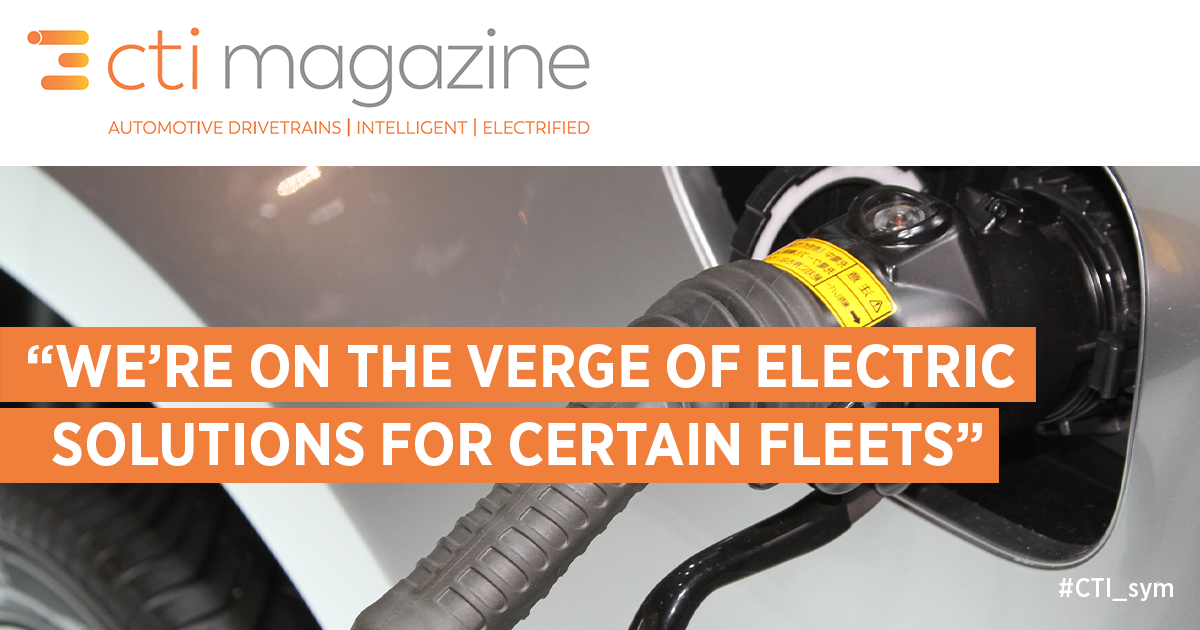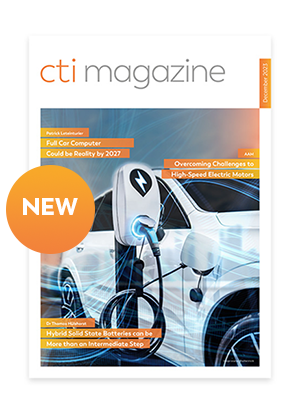

CO2 emissions in the commercial vehicle sector must be reduced: When are battery electric drives suitable, where are alternative fuels an option?
We talked to Professor Giorgio Rizzoni of Ohio State University, who, inter alia, researches ‘future ground vehicle propulsion systems’.
Professor Rizzoni, what are commercial vehicle use cases in the US compared to Europe?I’m going to divide the commercial market a little bit: One side is the bus transit, which is transporting passengers on fixed routes. Then you have a sector that we call the work trucks. They could have a variety of functions, from picking up garbage to being cement mixers etc. Another big category is package delivery. Then you have the long haul trucks for the long routes. Generally, vehicles in the US are classified from class 1 to 8. Class 1 and 2 are light to medium trucks, 3 to 6 medium trucks and 7 to 8 the heavy trucks. One big difference outside the US is that some light-duty trucks and vans would in fact be considered medium vehicles in Europe – trucks start ‘smaller’ in Europe.
Regarding future transportation, long haulage with BEVs seems to be a contradiction. What prospects do you see for fuel cell drives?
If you are looking at long-haul type transportation, battery electric solutions are probably not practical indeed, because you would have to carry a lot of batteries, and have a considerable charging infrastructure along major freeways. Here in the US, liquefied natural gas, LNG, has been considered and is being developed. That is a realistic prospect. I am personally a little bit less positive about hydrogen, because its storage and distribution is really an issue. And not only that: From a volumetric perspective, hydrogen requires sizable tanks, even if weight is not comparable to batteries. But to have an infrastructure for hydrogen fueling – I see greater challenges than for LNG.
What about synthetic natural gas made from hydrogen and CO2?
Let’s paint the picture: If you were not required to store and move hydrogen, when you might find a way near a refueling place to produce it, it would be fantastic. But would you create dedicated pipelines to special refueling stations? That second part, the infrastructure, is still a question mark in my mind. Renewable hydrogen, produced from wind energy through electrolysis, has been demonstrated quite successfully (including in Germany), with the hydrogen produced being injected in the natural gas pipeline network. But when you use it in vehicles, you are caught up with the same problem of range and volume of storage. Especially for line haul purposes, if you’re really going across the country, it’s not practical. On the other hand, what has worked in the US, is natural gas for transit and city buses; the penetration is increasing significantly. In the city of Columbus for example, they have two major depots and about 400 buses. Today, the penetration is 75 to 80 percent. But if I’m going to drive from New York to Los Angeles, I don’t think that will work.
So what would be the best fuel for long distances?
I think, practically, liquefied natural gas is probably the best thing we can do for long-haul freight in the short term. You can deploy most of today’s well-known diesel engine technology and convert the engines to run on gas in a relatively simple way. But along the main corridors we still need a sufficient density of refueling stations. To replace diesel as the fuel for long haul trucks is a tough thing to do. I know, in Germany there is quite a bit of talk about overhead electric power supply. I think that is probably very expensive on long distances. So again, we keep coming back to the same word: ‘infrastructure’ is the main challenge for all kinds of energy.
Let’s assume we wouldn’t have gasoline and diesel anymore. What would we do?
Certainly, some aspects of e-mobility are reasonable. Locally, you have zero emissions. In cities like Stuttgart, with this bowl geometry, it would be good to have no particulate emissions anymore. But in fact, the electricity is produced somewhere else, making electricity from a coal plant is not that great, you are just displacing emissions. Of course, the electric power grid is continuously reducing its carbon dependence, but that is a long-term process. Now, if we didn’t have petroleum-based fuels, we would have to look for a low carbon fuel alternative. For example, biomass based fuels – plants absorb carbon dioxide from the atmosphere. It will not be net-zero carbon, but with much lower CO2 emissions. It’s petroleum-like and can used like it in engines. There is no simple answer, but low carbon fuels should be a subject of research as electrification is. They are alternatives, it’s not the one or the other. We already have the infrastructure for liquid fuels. Let’s learn how to make fuels from biomass that have the least impact on the environment.
